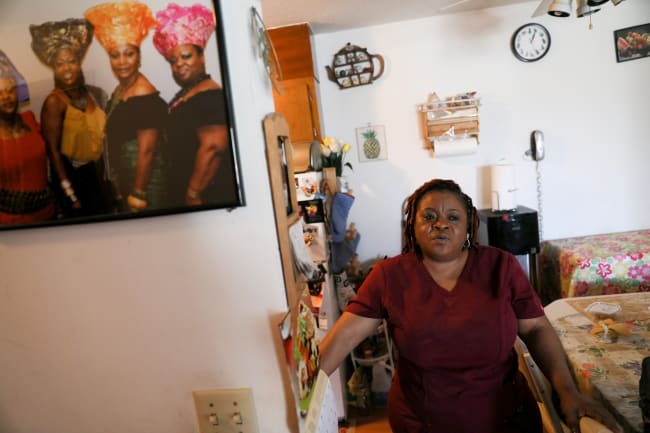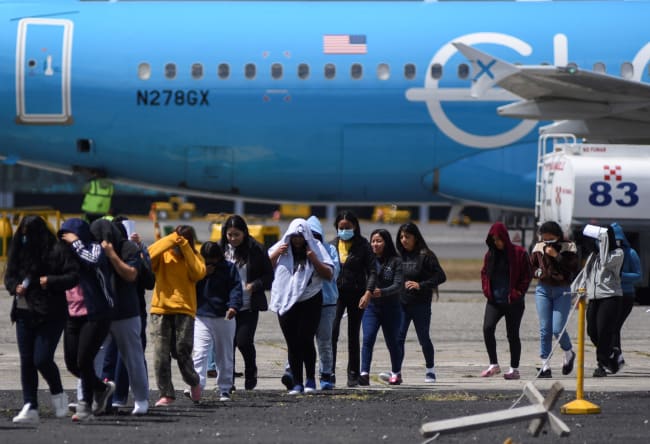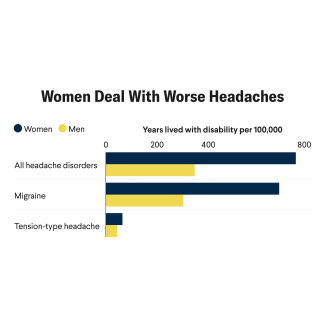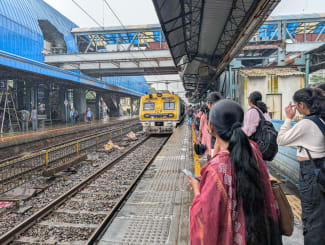On the north end of Borneo lies the Malaysian state of Sabah, an island paradise that offers destination beaches, a diver's playground among coral reefs, some stunning views of the country's highest peak, Mount Kinabalu, the natural beauty of rainforests teeming with jungle life—and a newly-emerging international polio crisis.
On December 8, 2019, Malaysia's Health Ministry announced the country's first polio case since 1992. The World Health Organization (WHO) later announced that the strain found in Malaysia is genetically linked to the poliovirus currently circulating in southern Philippines, which already declared a polio outbreak on September 19, 2019, and a measles outbreak in February, 2019.
people in Sabah are non-citizens
There are 3.9 million people in Sabah, of whom 1.2 million are non-citizens, a broad term that includes migrants, stateless people, refugees, and asylum-seekers. Seventy percent of them are undocumented, and it's likely that their total numbers are underestimated. Sabah has long and porous borders with Brunei, Indonesia and the Philippines. The Filipino island of Sulu (190 kilometers and two hours' ride away by speedboat) is home to the self-styled Sultan of Sulu who continues to claim Sabah as ancestral territory and occasionally refuses to recognise the Filipino government. Most of the polio cases in the Philippines are on Mindanao Island (350 kilometers from Sabah), site of an ongoing separatist movement sometimes called the Bangsamoro Rebellion [PDF].
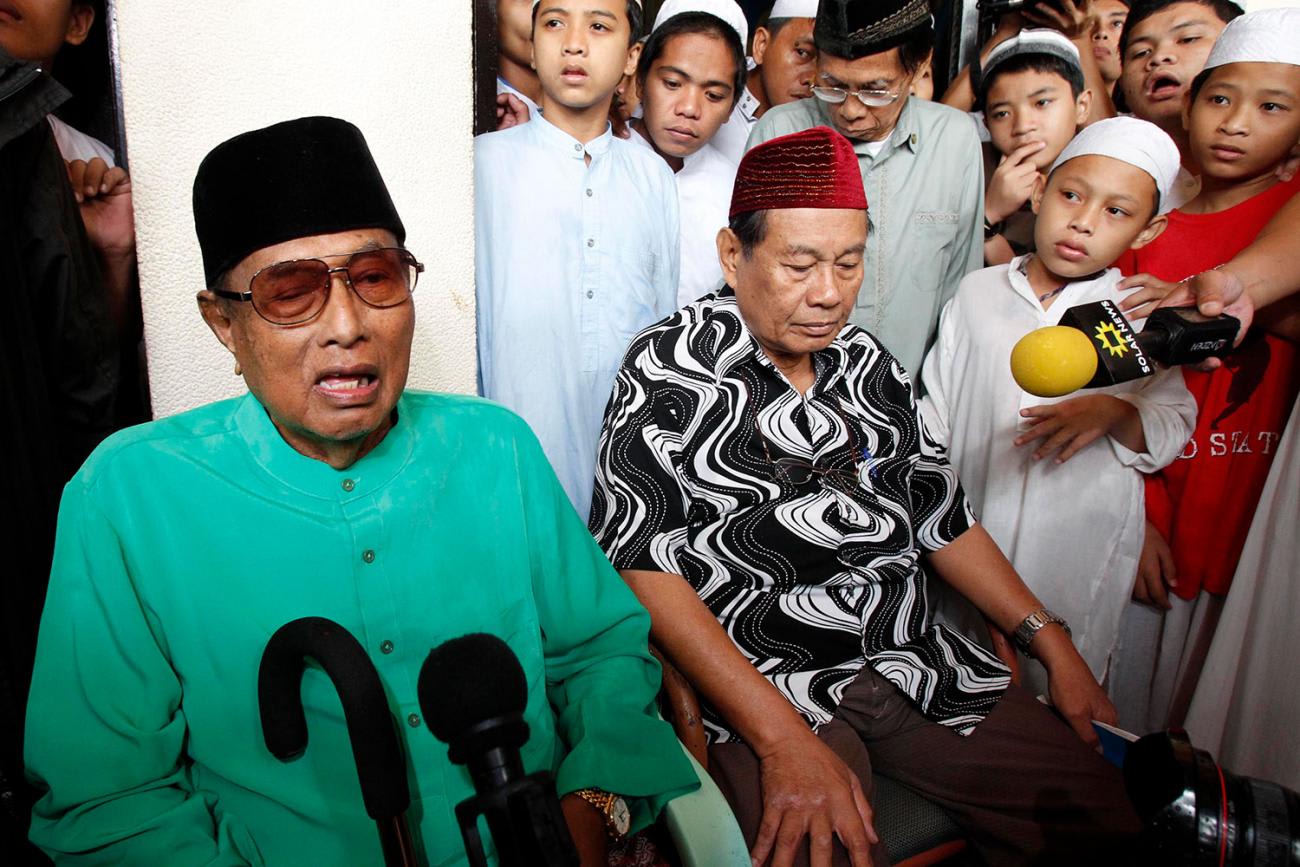
Mindanao has witnessed transnational and domestic terrorist activities by at least four organized groups. Since 1963, Sabah has seen numerous incursions, attacks and kidnappings, and even an invasion in 2013 that led to seventy-two deaths. Given this history and geography, inevitable speculation in Malaysia has seen some quarters blaming illegal immigration for the polio case, creating destructive "us versus them" narratives.
The demography, politics, history, geography, and geopolitics of Sabah play into three separate, divisive issues: vaccine access and confidence, migration and the health-care rights of noncitizens, and borderless outbreaks and the role of nation states. Given this combustible mix, the newly emerging, unusually complex polio crisis requires three simultaneous policy responses utilizing an all-of-the-above set of solutions.
Policy One: Aggressively Increase Access to and Confidence in Vaccines
Along with vaccine access, the World Health Organization (WHO) lists vaccine hesitancy—the tendency to refuse, delay or harbour reluctant attitudes toward vaccination—as one of its top ten threats to global health. Immunizations are mandatory in the Philippines, recommended in Malaysia, and free for citizens in both countries. The vaccination rates in the Philippines have dropped significantly since 2008 [PDF], while Malaysia's remain close to 100 percent [PDF].
Non-citizens in Malaysia have no right to free public health care service.
Access is an issue in rural areas, places where the state is not visible, or where the security situation is fraught. Additionally, non-citizens in Malaysia have no right to free public health care services because Malaysia isn't party to several governing international conventions, including the 1951 Refugee Convention [PDF], the 1954 Convention relating to the Status of Stateless Persons [PDF], or the 1990 International Convention on the Protection of the Rights of All Migrant Workers and Members of Their Families. Indeed, undocumented non-citizens risk arrest even while seeking care in public hospitals.
Vaccine hesitancy is a separate issue. In the Philippines, vaccine confidence has dropped following the dengue vaccine debacle in 2018. The anti-vaccination movement is increasingly organized in Malaysia and elsewhere, and they are especially effective today through their efforts to spread misinformation on social media. Part of the movement has a religious angle, despite reassurances from Islamic scholars and leaders.
Increasing vaccination rates must address what are sometimes called the three C's: complacency, convenience and confidence. Southeast Asian countries must more assertively counter rumours and misinformation, win the social media battlefront, provide more education to parents and increase physical access to clinics. Additionally, mandating vaccinations before attending schools (like Singapore) or issuing fines (like Germany) might be necessary.

We can add a fourth C for conflict in some parts of the Philippines, with polio risk exacerbated by the local security situation. In these places, the state needs to build trust and a visible presence. This will require localized solutions, grassroots leadership, neutral brokers, and conflict de-escalation before health services can come in. In fragile communities with lower trust in governments, paying parents to vaccinate their children (like conditional cash transfer programs in Indonesia, in Nicaragua and in Zimbabwe) could be helpful but must be handled with care.
Policy Two: Provide Health Care to Non-Citizens in Your Country, but Secure Your Borders
Achieving the WHO priority of providing health care for all means doing so for citizens and non-citizens alike. Fortunately, governments have an incentive to provide healthcare rights to non-citizens within their borders while simultaneously better securing their borders. Malaysia's Health Ministry has already made the laudable decision to partner with the Philippines' government and UNICEF to ensure migrants are vaccinated This partnership is unprecedented and remarkable because ASEAN nations have a famous policy of non-interference.
Achieving the WHO priority of health care for all means doing so for citizens and non-citizens alike.
This partnership must resolve a few challenges that can offer lessons to other countries. The additional cost of the vaccines can be shared by Malaysia, the Philippines, and UNICEF. The health systems of Malaysia and the Philippines must collaborate to ensure full immunization in a highly mobile migrant population suspicious of authority and record-keeping. Logistically, the two countries use different vaccines (inactivated polio vaccine in Malaysia and the oral polio vaccine in the Philippines), with consequences for procurement, delivery and switching. As of yet, there is no decision on who bears the responsibility for potential side effects. There is a difficult slippery slope question of the extent of health services: if it starts with one vaccine, where does it end, and when do we force non-citizens to become taxpayers?
In parallel to the partnership, the Malaysian government must not target non-citizens who visit public health care facilities for vaccinations. Effective education and reassurance must be provided to non-citizens to convince them about the virtues of vaccinations and to inspire trust that allows them to see past false rumors like those suggesting the vaccines are meant to sterilize or harm their children. They are there to protect, not harm. Grassroots leadership is crucial to help people accept this, as are cultural interpreters and anthropologists.
Simultaneously however, governments must make citizens feel their borders are protected, or they risk losing office at the next election. Australia is a perfect example. Their border controls are famous (even inspiring a TV show), but 30 percent of all Australians are foreign-born compared to the 13 percent average in countries belonging to the Organisation for Economic Cooperation and Development (OECD). This shows that a country can be migrant-friendly if the native population feels that they have control over their borders (Australia's Pacific Solution notwithstanding). Territorial integrity is necessary for governments to maintain their legitimacy, which in turn allows them to provide healthcare rights to non-citizens.
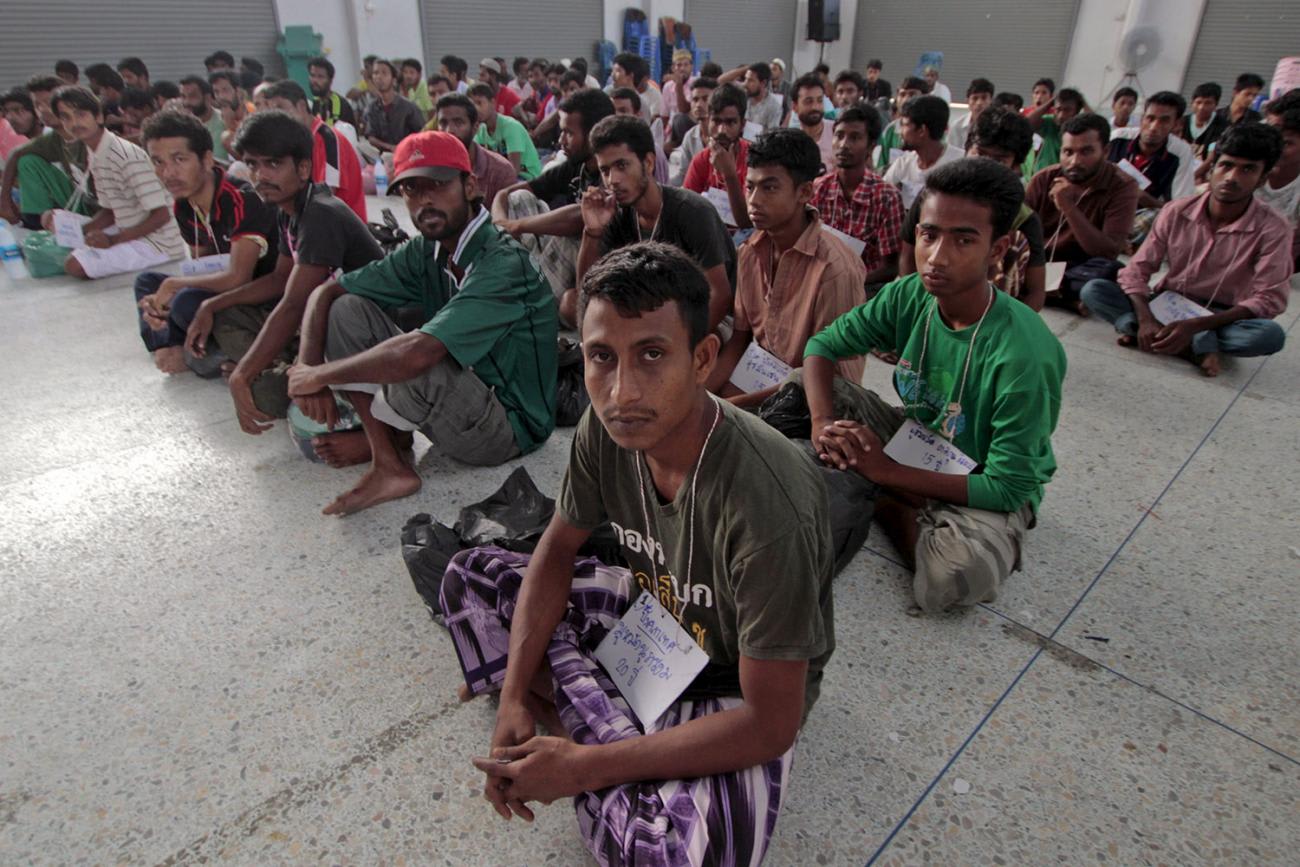
This position of simultaneously providing rights to non-citizens and enforcing borders could be schizophrenic for some governments, but it seems to work for Thailand. As long ago as 2001, Thailand launched a health insurance scheme for all migrants, and even expanded it to include dependents in 2005. Annual premiums of approximately $73 per individual are paid by the migrants themselves, and more than one million migrants have signed up—approximately 34 percent of all migrants. More countries should learn from the Thais.
There are many incentives for a government to provide rights-based access to reasonable healthcare services even for undocumented migrants. To protect their own citizens, governments should care for the health of non-citizens, especially when it comes to communicable diseases. Migrants also contribute significantly to the economies of the countries where they live, so a strong economic argument can be made for keeping them in good health. Even if countries don't ratify relevant international conventions, religious and medical ethics demand that we protect human beings everywhere. Children especially should not be punished for the crimes of their parents. Bulk purchases of vaccines can reduce unit costs for everyone, and health systems can benefit from economies of scale. Countries will gain international stature by extending rights to non-citizens. These are multiple wins. The questions that crop up are daunting and endless, but it's crucial to get started and sort out the questions along the way.
Policy Three, Institutionalizing ASEAN Collaboration
Although humanity's biggest problems require international solutions, nation states still hold the most power, resources, and legitimacy to solve them. However, the international polio crisis in Southeast Asia is a textbook example of the simultaneous power and limits of nation states. The sort of ad hoc partnerships set up between two governments in emergency situations is a great place to start, but Southeast Asia can build durable health solutions in two additional ways.
Regional health is intertwined with physical security, counterterrorism, crime, and economic growth
Firstly, Southeast Asian nations should strengthen relevant bilateral relationships in deep, routine and irreversible ways. Currently, these relationships are dominated by more "safer" topics of trade and cultural exchange, shying away from crucial but thorny topics that could violate the sacred principle of non-interference. This must change. Solving the current polio crisis must consider illegal immigration, migrant health rights, stateless people, and transnational violence in that region, all of which impact health but cannot be solved by either country alone. Therefore, the nascent partnership between the Health Ministry of Malaysia and the Health Department of the Philippines must also involve players who represent agencies in charge of foreign affairs, domestic affairs, the court systems, and defence activities in both countries. Regional health is intertwined with physical security, counterterrorism, crime, and economic growth—with health being both a determinant and a consequence of development.
Given the longstanding, complex and interlinked nature of this region's health issues, one can imagine a regional multilateral commission shared between Indonesia, Malaysia and the Philippines similar to the Sulu-Celebes Commission, which governs maritime issues. This commission could draw inspiration from the Mekong River Commission, which gathers Cambodia, Laos, Thailand and Vietnam to manage the Mekong River and its resources in a structured and non-crisis fashion. With trust borne from familiarity and predictability, the Sulu-Celebes Commission can build durable health, security, legal and economic solutions.
Southeast Asian nations should also build more sustained health cooperation and capacity in ASEAN's leadership and governance structures. A common observation is that the ASEAN Secretariat isn't organized in a way that enables them to fulfil the lofty aspirations of the ASEAN Charter. The Secretariat's deficit of political capital could also explain its paltry "incremental evolution" over four decades.

As a neutral broker, ASEAN is able to promote health systems collaboration, resilience, and capacity-sharing. However, they face many challenges. The Health Division is buried deep within the Secretariat's organizational structure, which heavily favours trade and security. Meetings of health ministers take place only every two years, and when they do they convene for a only a few days before issuing ineffectual, bland statements [PDF] of cooperation. The participants in these groups often lack institutional memory due to frequent changes of political leadership. A senior officials meeting precedes these high-level meetings but have been described as "bureaucratic and compartmentalized" and similarly too infrequent to be impactful.
Discussions of health during ASEAN regional meetings are heavily trade-focused—promoting private healthcare, health tourism, health insurance, and mobility of health professionals—instead of focusing on public health, disease surveillance, or systems strengthening. The four Health Cluster Work Programs developed by ASEAN countries are better articulated but lack the political willpower to be truly effective. Compounding these challenges are the fading memories of the 2003 SARS epidemic, growing intra-ASEAN movement and increasingly inward-looking member states.
Inefficiently, East Timor, Indonesia, Myanmar and Thailand are in the WHO's Southeast Asia Regional Office (SEARO), and the other six ASEAN member states are in the Western Pacific Regional Office (WPRO). ASEAN can overcome this hurdle by institutionalizing collaboration within the Secretariat, to become a relevant and powerful global health actor. It doesn't need an ASEAN Federation, Parliament, common currency or joint army to fix health problems, just some politically feasible steps.
The international polio crisis in Southeast Asia proves that the time for non-interference is over
In an improved organizational structure, the Health Division should be upgraded firstly to a directorate and eventually to a department with more human, financial, and political capital. A more frequent schedule of meetings between senior health technocrats must be convened. Systems and pathways can be built in a stepwise fashion, beginning with outbreak responses, proceeding to communicable diseases and bioterrorism threat responses, and then progressing to other health rights for citizens and non-citizens. If necessary, the invigorated Health Directorate can convene meetings of other stakeholders, for example to resolve the rights of non-migrant intra-ASEAN citizens.
The international polio crisis in Southeast Asia proves that the time for non-interference is over. This outbreak is important, but could be trivial when compared to other challenges like ASEAN's race to the bottom on tax revenues or climate change. ASEAN can and must get it right.
Health is a Political Choice
The Mandarin word for crisis is 危机 (Wéijī), a portmanteau of "danger" and "opportunity." In the ideal world, ASEAN's crisis management capabilities should be founded on its peacetime collaborations. Instead, we now have a crisis that's reversing the usual sequence of events.
Southeast Asian nations must not let the lessons of this crisis go unlearned. The first few responses of the Malaysian and Filipino governments are in the right direction. It's now up to all Southeast Asian nations to make the right political choices to ensure health for all their people.



